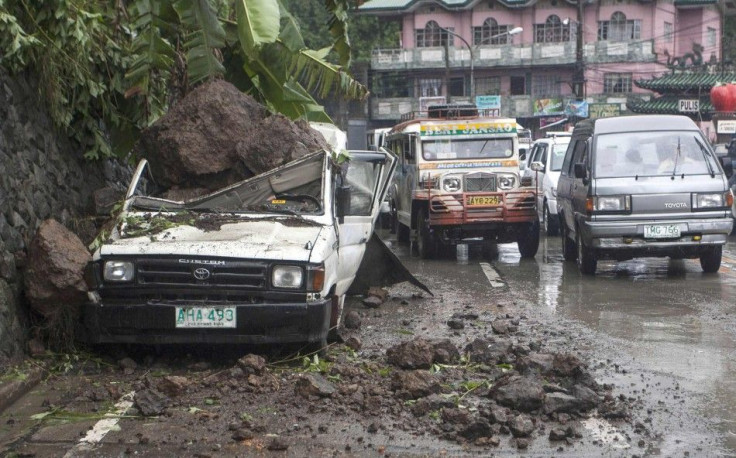Japan Advised to Brace for Neoguri, 2014’s First Super Typhoon; Okinawa Will Receive Worst Impact

Residents of Japan's Okinawa are being advised to take all necessary precautions as Neoguri has strengthened to become the world's first super typhoon of 2014.
The intensifying and dangerous super typhoon, according to Tropical Storm Risk (TSR), could strike Japan at 09:00 GMT on July 9.
Potential property damage and flooding from Neoguri, currently a category 4, at landfall, according to the Saffir-Simpson damage scale, includes:
- Storm surge generally 4.0-5.5 metres (13-18 feet) above normal
- Curtainwall failures with some complete roof structure failures on small residences
- Shrubs, trees, and all signs blown down
- Complete destruction of mobile homes
- Extensive damage to doors and windows
- Low-lying escape routes may be cut by rising water 3-5 hours before arrival of the centre of the storm
- Major damage to lower floors of structures near the shore
- Terrain lower than 3 metres (10 feet) above sea level may be flooded requiring massive evacuation of residential areas as far inland as 10 km (6 miles)
- There is also the potential for flooding further inland due to heavy rain.
"Being right of the storm track, Okinawa will likely see the worst impact from the storm on Monday night with rainfall rates of 50 mm (2 inches) or greater per hour at times, sustained winds as high as 225 kph (140 mph) with occasional gusts of 290 kph (180 mph)," Evan Duffey, AccuWeather.com meteorologist, said.
AccuWeather.com even advised residents in South Korea to watch the storm and pay close attention to its track as it could also whip the country.
"Strengthening will continue through the next couple of days as the typhoon progresses through an area of very warm ocean waters and low wind shear. This, along with being a well-defined storm already, is likely to allow this to be a very powerful typhoon," Eric Leister, Accuweather meteorologist, said.
The outermost rain bands of typhoon Neoguri will graze and drench South Korea at midweek. "The island of Jeju in the Korea Strait will likely see the worst impacts for South Korea. With the storm just off to the south, the island will certainly see strong winds, along with very rough surf and heavy rain," Duffey said.
Neoguri as of Sunday has intensified into super typhoon strength with maximum sustained winds of 240 kph (150 mph).
"Residents and visitors in the path of this intensifying and dangerous super typhoon should use the time now to make the necessary preparations and heed all evacuation orders."





















